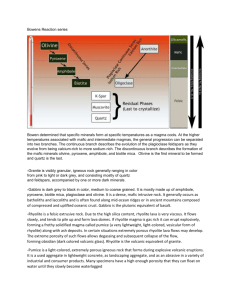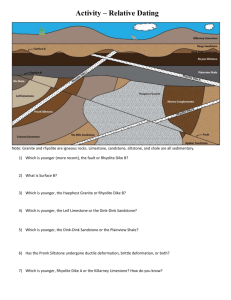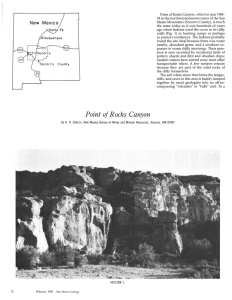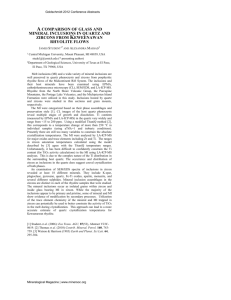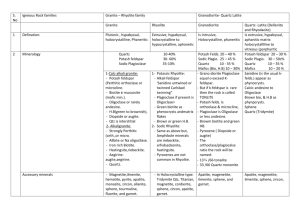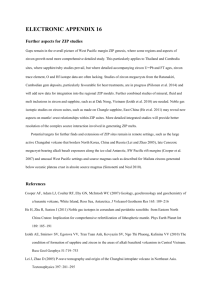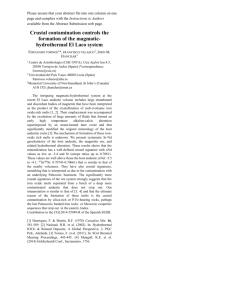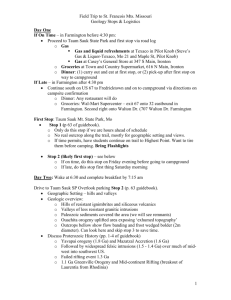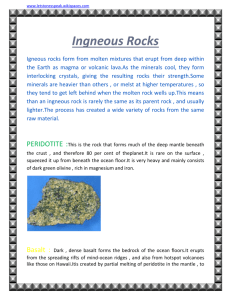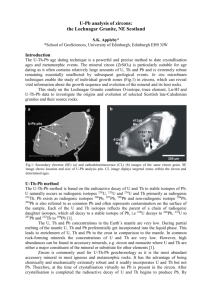ggge20630-sup-0001-suppinfo1
advertisement
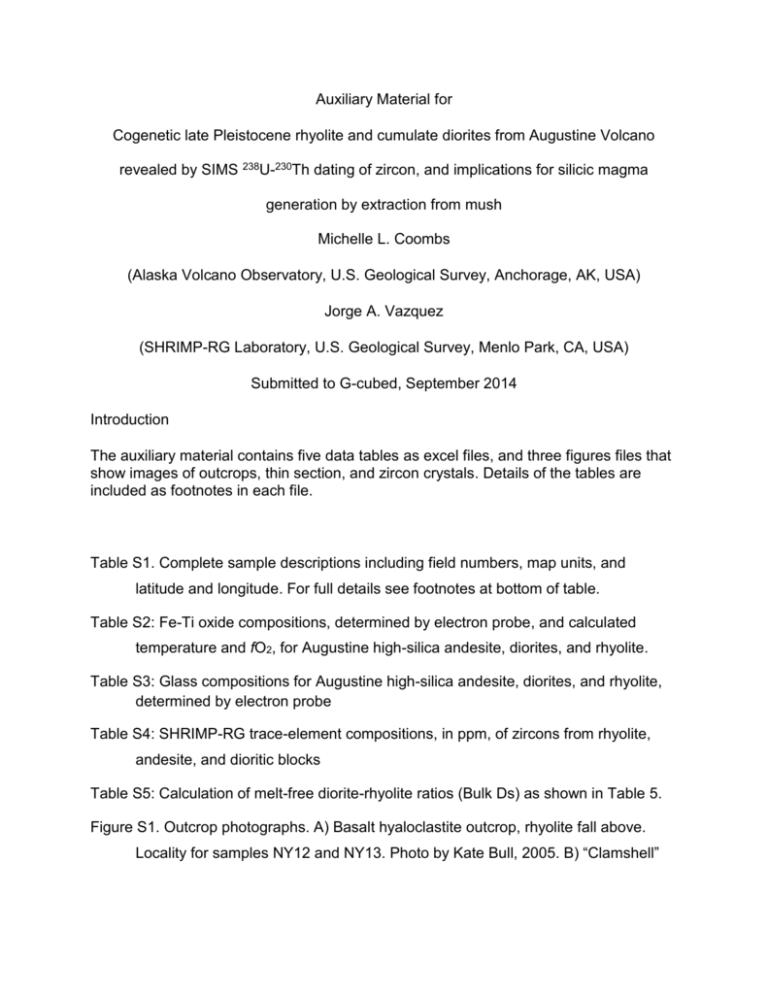
Auxiliary Material for Cogenetic late Pleistocene rhyolite and cumulate diorites from Augustine Volcano revealed by SIMS 238U-230Th dating of zircon, and implications for silicic magma generation by extraction from mush Michelle L. Coombs (Alaska Volcano Observatory, U.S. Geological Survey, Anchorage, AK, USA) Jorge A. Vazquez (SHRIMP-RG Laboratory, U.S. Geological Survey, Menlo Park, CA, USA) Submitted to G-cubed, September 2014 Introduction The auxiliary material contains five data tables as excel files, and three figures files that show images of outcrops, thin section, and zircon crystals. Details of the tables are included as footnotes in each file. Table S1. Complete sample descriptions including field numbers, map units, and latitude and longitude. For full details see footnotes at bottom of table. Table S2: Fe-Ti oxide compositions, determined by electron probe, and calculated temperature and fO2, for Augustine high-silica andesite, diorites, and rhyolite. Table S3: Glass compositions for Augustine high-silica andesite, diorites, and rhyolite, determined by electron probe Table S4: SHRIMP-RG trace-element compositions, in ppm, of zircons from rhyolite, andesite, and dioritic blocks Table S5: Calculation of melt-free diorite-rhyolite ratios (Bulk Ds) as shown in Table 5. Figure S1. Outcrop photographs. A) Basalt hyaloclastite outcrop, rhyolite fall above. Locality for samples NY12 and NY13. Photo by Kate Bull, 2005. B) “Clamshell” diorite inclusion (sample site MLC027c) from waning phases of 2006 eruption. Block was shed from toe of 2006 lava flow. Photo by M. Coombs, 2006. Figure S2. Transmitted-light photomicrograph of diorite 06AUMLC012a. Blue is epoxy. Field of view appx. 1 cm across. Figure S3. Scanning-electron microscope (SEM) images of analyzed zircon in a pdf file.
